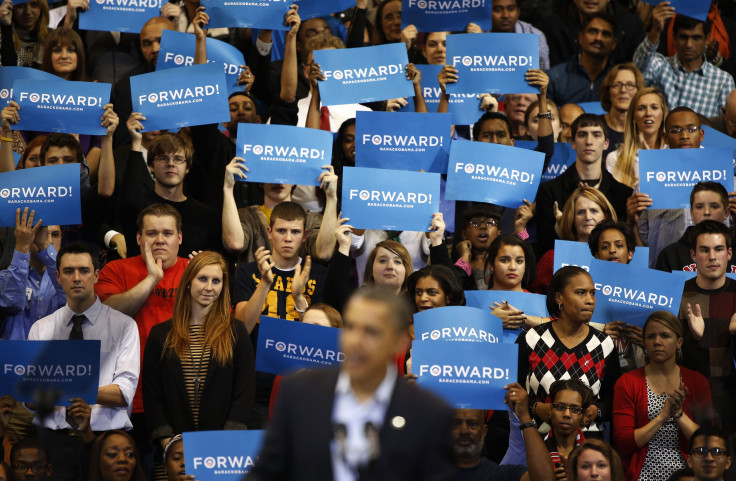Will Millennials Determine The 2016 Presidential Election? New Poll Looks At Their Voting Plans

Millennials are already warming up to their preferred 2016 presidential candidates. Young Democrats are solidly in former Secretary of State Hillary Clinton's camp, while Wisconsin U.S. Rep. Paul Ryan has a slight advantage in the Republican race, according to a poll released Thursday. The results of the Fusion Media Network survey detail the 2016 voting plans of likely American voters between the ages of 18 and 34, and help shed light on how they could affect the race to succeed President Barack Obama in the White House.
The issues most important to millennial voters are the economy, debt, spending and terrorism, the Fusion poll conducted between Sept. 12 and 24 showed. Dubbed the Massive Millennial Poll, the survey of 1,200 presumed likely voters shows that there is quite a bit of wiggle room left in the race, as 47 percent said they will pick Democrats, 32 percent will go with Republicans, and 21 percent are still undecided about which party they will support. The race is also wide open among Republican millennials who are likely to vote, as 16 percent say they will go with Ryan, 11 percent chose former Florida Gov. Jeb Bush, and 9 percent picked Kentucky U.S. Sen. Rand Paul, according to the poll.
The race among their Democratic counterparts is much more predictable, as Clinton has locked up 58 percent of their vote, while 13 percent say they will go with Vice President Joe Biden and 9 percent support Massachusetts U.S. Sen. Elizabeth Warren, the Fusion poll showed.
The big question is whether the candidates will be able to get their young supporters out to the polls in 2016, a task that has proven difficult in previous elections. The results of the 2008 and 2012 presidential elections were influenced heavily by the youth vote. A study by the Center for Research and Information on Civic Learning and Engagement at Tufts University released shortly after the 2012 election showed that Obama took 67 percent of the nationwide youth vote, while Mitt Romney pulled in only 30 percent.
The youth vote was key in tipping important states like Florida, Pennsylvania, Ohio and Virginia to Obama, who won at least 61 percent of it in each state, according to the study. If Romney had gotten even half of those voters in those states, he would be president today, the study showed.
But turnout among millennials is on the wane, and it is unclear whether Clinton, Ryan or any other candidate will be able to attract the kind of youth support Obama enjoyed. An April 2014 poll by Harvard University's Institute Of Politics found that just 23 percent of 18-to-29-year-old Americans said they will "definitely be voting" in this year's midterm election, a drop of 11 percentage points from the 31 percent who answered that way five months earlier. Midterm elections are notorious for low turnouts, but the projected low turnout of young voters in November's contest does not bode well for presidential candidates counting on them in 2016.
© Copyright IBTimes 2024. All rights reserved.











